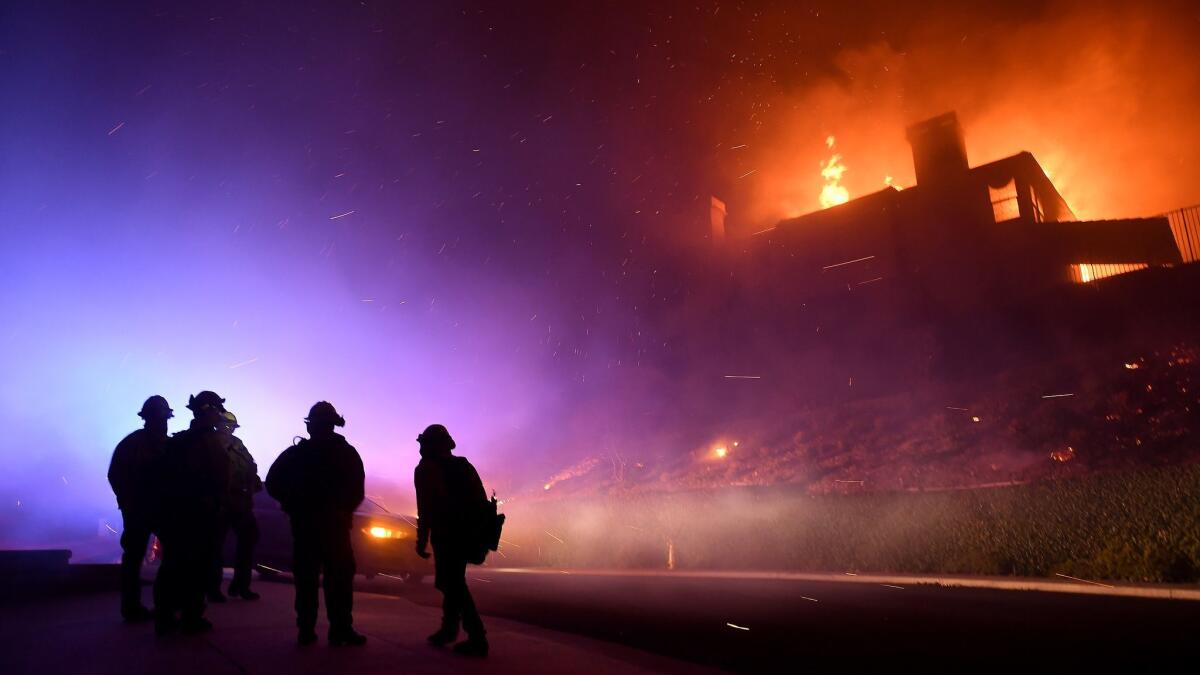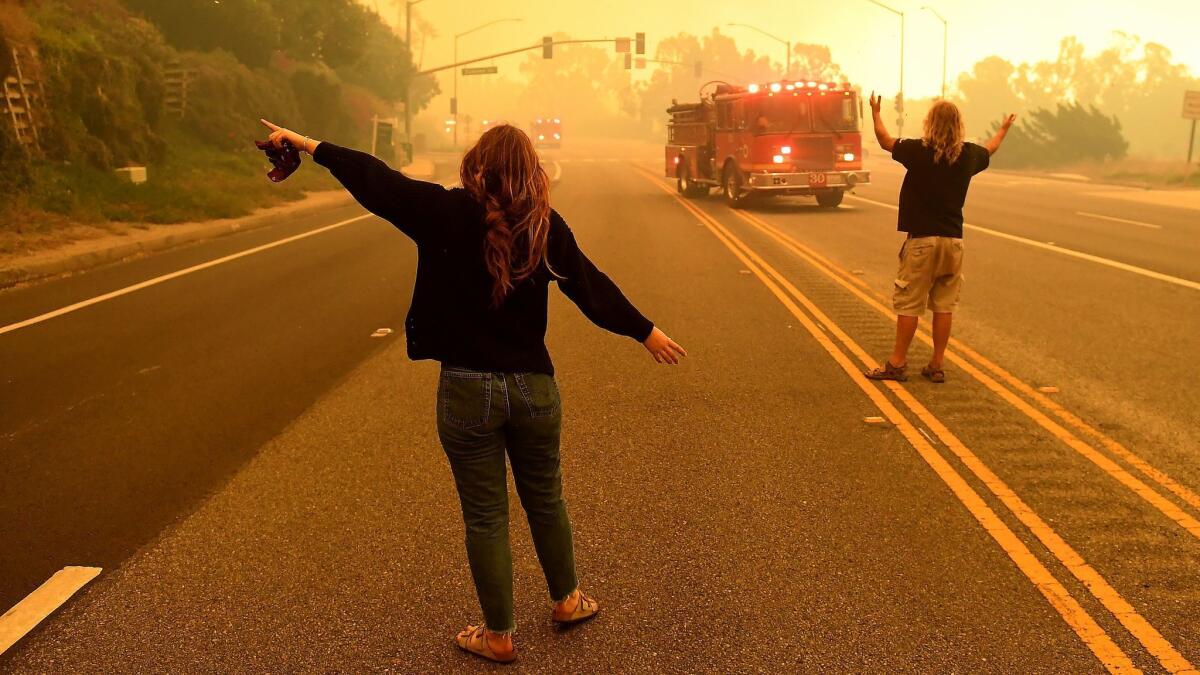Firefighters distracted by politician requests during Woolsey fire

- Share via
Los Angeles Fire Department officials said their response to the massive Woolsey fire was complicated by requests from local politicians, according to a document reviewed by The Times.
“A significant number of requests by political figures to check on specific addresses of homes to ensure their protection distracted from Department leadership to accomplish priority objectives,” according to the LAFD’s after-action review on the Woolsey fire, which was the most destructive blaze in Los Angeles County’s modern history.
The Woolsey fire started Nov. 8 at the former Santa Susana Field Lab, burning next to the Ventura County-Los Angeles County line and near L.A. city limits. More than 1,600 structures from Westlake Village and Oak Park down to Malibu were destroyed, and at least four people died.
Since then, there have been questions about how the fire was fought, particularly during its rapid spread in its first 24 hours. The Times in January reported a lack of resources and planning in the first hours of the blaze.
The LAFD report did not provide details about the specific actions of politicians. Assistant Chief Tim Ernst said Friday in an interview that he did not know which politicians were involved or exactly how those requests affected the firefighting efforts.
Ernst, who did not write the after-action report, made a presentation that included details from the report during a brush fire training last week for LAFD’s chief officers.
There, he brought up the challenge of politicians and powerful, often wealthy, residents making requests of firefighters.
“One of the things I really wanted to mention, especially to the newer chiefs in the room, is that living in the city of L.A. or the county of L.A., we have to understand we probably have some of the wealthiest communities in America, and with that comes a certain amount of political power,” Ernst said in the interview.
Requests from politicians and other high-profile residents during fires shouldn’t become the priority or primary mission, he said, but instead should be sent through the proper channels to make sure they don’t become a distraction.
In the report, the agency recommended deploying field observers who can “provide real time information and reconnaissance to address specific requests from political figures during a large-scale incident.”
Ernst said many people don’t understand that these high-profile requests are not abnormal and happen during most large fires.
The assistant fire chief serves on an incident management team with the California Department of Forestry and Fire Protection. As part of that team, he travels the state serving as an incident leader on large fires.
“We don’t see probably the same type of requests if we’re in a poor community in Northern California, as opposed to in Southern California, where I think there’s a higher expectation with people being able to call someone in city government and ask questions about their properties, and I think that was the gist of this particular challenge,” he added.
On the day the Woolsey fire started, the Ventura County Fire Department had focused almost all of its firefighters on the Hill fire, a rapidly growing brush fire that started just 20 minutes before the Woolsey fire and quickly threatened homes near Camarillo.
This left the Woolsey fire largely up to the LAFD and the L.A. County Fire Department to fight, as the fire was burning in an area that the three agencies had agreed, through a memorandum of understanding, to protect together. Problems quickly developed.
In the first few hours of the Woolsey fire, LAFD responded in the greatest numbers, while Ventura County sent a skeleton crew and the L.A. County Fire Department initially sent the majority of its responding firefighters to a county fire station in Agoura Hills, where they awaited the fire to cross into L.A. County.
Firefighters on the front lines complained of a lack of water, communication and direction from the fire incident leaders. The magnitude of the Woolsey fire seemed to quickly exacerbate problems that frequently occur during any brush fire.
Plus, Mother Nature had brought in particularly dangerous fire weather that week. Meteorologists warned the day the Hill and Woolsey fires started that humidity was low, grass and brush were dry, and the Santa Ana winds would increase through the evening.
“We knew the weather was going to be bad days in advance,” LAFD Chief Ralph M. Terrazas told the city fire commission at its November meeting. “We staffed up. We had the department operations center fully staffed. We were launching a lot of resources. At our peak, we had 10 strike teams, about 50 engines. About 1/3 of all our fire apparatus were in that fire, and we have to support the region, especially L.A County.”
The Woolsey fire became the seventh-most destructive fire in modern California history, burning almost 97,000 acres.

More to Read
Sign up for Essential California
The most important California stories and recommendations in your inbox every morning.
You may occasionally receive promotional content from the Los Angeles Times.











